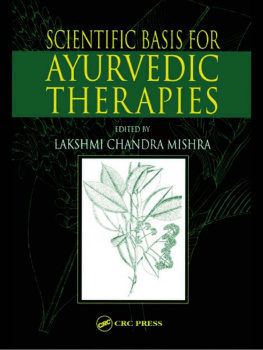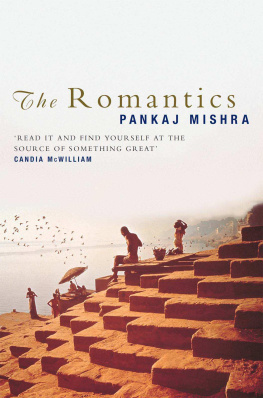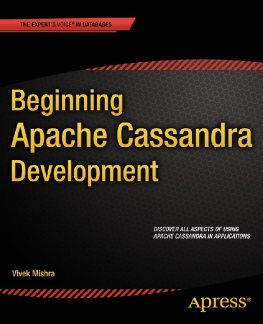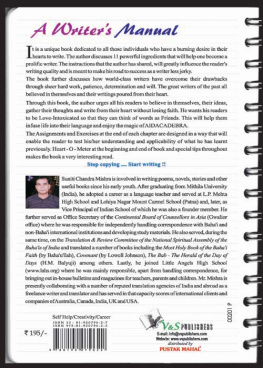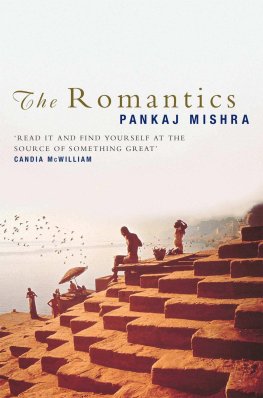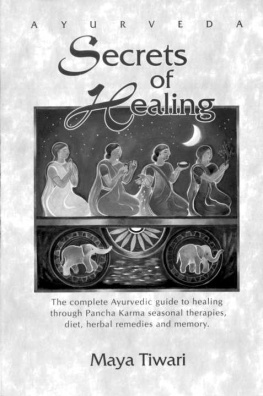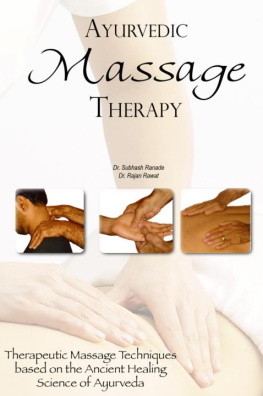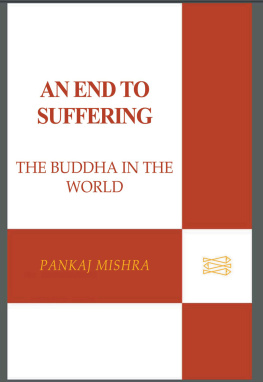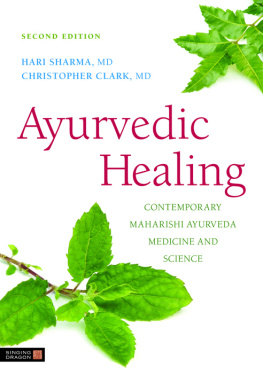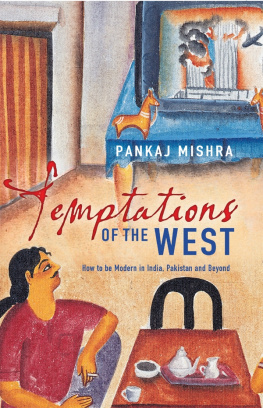Mishra - Scientific Basis for Ayurvedic Therapies
Here you can read online Mishra - Scientific Basis for Ayurvedic Therapies full text of the book (entire story) in english for free. Download pdf and epub, get meaning, cover and reviews about this ebook. City: Boca Raton;FL, year: 2004;2011, publisher: Taylor & Francis (CAM);CRC Press, genre: Politics. Description of the work, (preface) as well as reviews are available. Best literature library LitArk.com created for fans of good reading and offers a wide selection of genres:
Romance novel
Science fiction
Adventure
Detective
Science
History
Home and family
Prose
Art
Politics
Computer
Non-fiction
Religion
Business
Children
Humor
Choose a favorite category and find really read worthwhile books. Enjoy immersion in the world of imagination, feel the emotions of the characters or learn something new for yourself, make an fascinating discovery.
- Book:Scientific Basis for Ayurvedic Therapies
- Author:
- Publisher:Taylor & Francis (CAM);CRC Press
- Genre:
- Year:2004;2011
- City:Boca Raton;FL
- Rating:4 / 5
- Favourites:Add to favourites
- Your mark:
- 80
- 1
- 2
- 3
- 4
- 5
Scientific Basis for Ayurvedic Therapies: summary, description and annotation
We offer to read an annotation, description, summary or preface (depends on what the author of the book "Scientific Basis for Ayurvedic Therapies" wrote himself). If you haven't found the necessary information about the book — write in the comments, we will try to find it.
Mishra: author's other books
Who wrote Scientific Basis for Ayurvedic Therapies? Find out the surname, the name of the author of the book and a list of all author's works by series.
Scientific Basis for Ayurvedic Therapies — read online for free the complete book (whole text) full work
Below is the text of the book, divided by pages. System saving the place of the last page read, allows you to conveniently read the book "Scientific Basis for Ayurvedic Therapies" online for free, without having to search again every time where you left off. Put a bookmark, and you can go to the page where you finished reading at any time.
Font size:
Interval:
Bookmark:

AYURVEDIC
THERAPIES
AYURVEDIC
THERAPIES
EDITED BY
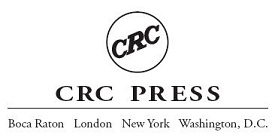
This edition published in the Taylor & Francis e-Library, 2005.
To purchase your own copy of this or any of Taylor & Francis or Routledges collection of thousands of eBooks please go to www.eBookstore.tandf.co.uk.
Library of Congress Cataloging-in-Publication Data
Scientific basis for Ayurvedic therapies / edited by Lakshmi C. Mishra.
p. cm.
Includes bibliographical references and index.
ISBN 0-8493-1366-X (alk. paper)
1. Medicine, Ayurvedic. I. Mishra, Lakshmi C. (Lakshmi Chandra)
[DNLM: 1. Medicine, Ayurvedic. WB 50.1 S416 2003]
R605.S376 2003
615.5'3dc21 2003055156
This book contains information obtained from authentic and highly regarded sources. Reprinted material is quoted with permission, and sources are indicated. A wide variety of references are listed. Reasonable efforts have been made to publish reliable data and information, but the author and the publisher cannot assume responsibility for the validity of all materials or for the consequences of their use.
Neither this book nor any part may be reproduced or transmitted in any form or by any means, electronic or mechanical, including photocopying, microfilming, and recording, or by any information storage or retrieval system, without prior permission in writing from the publisher.
All rights reserved. Authorization to photocopy items for internal or personal use, or the personal or internal use of specific clients, may be granted by CRC Press LLC, provided that $1.50 per page photocopied is paid directly to Copyright Clearance Center, 222 Rosewood Drive, Danvers, MA 01923 USA. The fee code for users of the Transactional Reporting Service is ISBN 0-8493-1366-X/02/$0.00+$1.50. The fee is subject to change without notice. For organizations that have been granted a photocopy license by the CCC, a separate system of payment has been arranged.
The consent of CRC Press LLC does not extend to copying for general distribution, for promotion, for creating new works, or for resale. Specific permission must be obtained in writing from CRC Press LLC for such copying.
Direct all inquiries to CRC Press LLC, 2000 N.W. Corporate Blvd., Boca Raton, Florida 33431.
Trademark Notice: Product or corporate names may be trademarks or registered trademarks, and are used only for identification and explanation, without intent to infringe.
Visit the CRC Press Web site at www.crcpress.com
2004 by CRC Press LLC
No claim to original U.S. Government works
International Standard Book Number 0-8493-1366-X
Library of Congress Card Number 2003055156
ISBN 0-203-49858-5 Master e-book ISBN
ISBN 0-203-58592-5 (Adobe eReader Format)
There has been increasing public interest in complementary alternative medicine during the past decade in the U.S. that led to the establishment of the Center for Alternative and Complementary Medicine at the National Institutes of Health (NIH), Bethesda, MD, by the U.S. Congress to conduct scientific evaluation of these therapies. The Ayurvedic system of medicine (traditional medical system of India) is recognized by NIH as a complementary and alternative medicine (CAM). Ayurveda has been practiced in India for over 5000 years and is recognized as a complete medical system comparable with allopathic medicine by the government of India. In India, Ayurveda has a complete infrastructure, medical colleges, hospitals integrated with allopathic medicine, research institutes, and scientific journals devoted to Ayurveda. In addition, Indias Ayurvedic pharmaceutical industry is governed by the same food and drug laws that regulate conventional drugs. Research in pharmacology, biochemistry, phytochemistry, and clinical trials of Ayurvedic therapies currently constitutes a substantial portion of the total research conducted in government institutes and medical colleges in India.
There has been considerable scientific research effort in Ayurvedic therapies during the past 50 years. This research has not been adequately disseminated to Ayurvedic students and physicians. In order to accomplish the assimilation of this research into practice, three major goals were set for this book: (1) to provide information on pharmacological, biochemical, and clinical investigations on Ayurvedic therapies; (2) to explore the scientific basis of Ayurvedic concepts of diseases, diagnosis, and treatments; and (3) to develop new interpretation of Ayurvedic concepts of therapies based on modern knowledge where possible.
As editor of the book, I used my combination of medical education in Ayurveda and research experience in conventional medicinal pharmacy and pharmacology in developing this text. Disease topics were carefully selected based on the scientific studies available and the prevalence of a disease. Knowledgeable physicians and scientists in these fields were selected based on their scientific contributions in the field to review and evaluate the worldwide literature. In addition, I, along with one Ayurvedic physician, one biochemist, and one overall expert with knowledge in conventional and CAM research methods, read each chapter.
General topics such as Ayurvedic disease management, panchakarma, Ayurvedic bhasmas, the current status of Ayurveda in India, and clinical research design and evaluation of typical clinical trials of certain diseases were written by experts in their fields.
It is my hope that the book will prove useful to all Ayurvedic and conventional medicine physicians, students and scientists, and the general public. In addition, the book is expected to bring awareness to the community of health-care providers that Ayurveda is significantly more than a few home remedies, yoga, and meditation. It is a fully established system of medicine, has a considerable scientific base, and has therapies that can be used alone or as an adjuvant with conventional health care as practiced in India.
Lakshmi Chandra Mishra
Editor
I gratefully thank first and foremost Dr. Betsy B. Singh, professor and dean of the Research Division, Southern California University of Health Sciences (SCUHS), for the encouragement and sincere help given to me in preparing this book. Dr. Singh took great interest in reviewing all the chapters and provided valuable comments in the area of science and clinical research methods. I am thankful to Dr. Sivarama Prasad Vinjamury, associate professor; Dinesha Ninjegowda, Research Division, SCUHS; and Vijay Singh for help in reviewing the chapters. Finally, I thank Neil Shepard and Raheleh Khorsan of the Research Division and Dr. Tarek Adra and Dyba Kalyani, SCUHS students, for the technical support provided.
I sincerely acknowledge the effort of all contributors, particularly those who contributed more than one chapter and made all the required changes requested by reviewers and editors on time. These contributors worked hard to secure the information required for the chapters, to take a scientific approach to the presentation of both the Ayurvedic and conventional medicine data on a particular topic.
Finally, I thank my children, Aparna Rani, Gyan Sagar, Anita Rani, and Dhyan Sagar, for their encouragement during the preparation of this book.
Font size:
Interval:
Bookmark:
Similar books «Scientific Basis for Ayurvedic Therapies»
Look at similar books to Scientific Basis for Ayurvedic Therapies. We have selected literature similar in name and meaning in the hope of providing readers with more options to find new, interesting, not yet read works.
Discussion, reviews of the book Scientific Basis for Ayurvedic Therapies and just readers' own opinions. Leave your comments, write what you think about the work, its meaning or the main characters. Specify what exactly you liked and what you didn't like, and why you think so.

